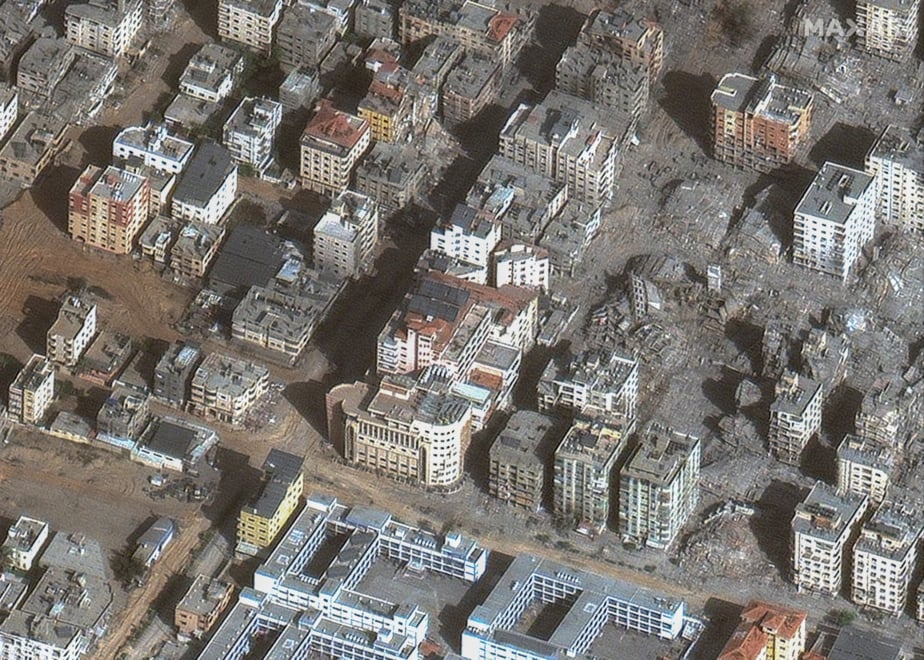

Destroyed residential building in the Gaza Strip
“Hell has returned to Gaza”- a UN representative admitted bitterly on Friday, when airstrikes were carried out again in the Gaza Strip after a seven-day truce. Intensive Israeli air strikes since October 7 in response to Hamas attacks in southern Israel, which have killed 1,200 people, have resulted in a humanitarian catastrophe: more than 15,000 people have died, including more than 6,000 children; more than 40,000 were injured; Up to 6,000 people disappeared under the rubble.

This also caused forced displacement of 1.8 million inhabitants. The Gaza Strip is one of the most densely populated areas in the world, with more than 2 million people living in just 365 square kilometers, and it has also been subject to a brutal blockade since Hamas took power 16 years ago. power after his victory in the last elections. A territory from which it is impossible to escape because both Israel and Egypt, two neighboring countries, keep their borders closed.
More than half of Gaza’s houses destroyed
Civilians are not the only victims of the Israeli military operation, which promises to “destroy Hamas,” despite international and analyst fears that such a goal could be realized by a movement rooted in the Palestinian political structure. Lead has caused devastation in the Gaza Strip, which has seen successive Israeli military offensives in recent decades. According to the latest data from the United Nations Office for the Coordination of Humanitarian Affairs (OCHA), the World Health Organization (WHO) and the Palestinian government, Israeli strikes destroyed or damaged more than half the homes in the Gaza Strip.
It took four years of war in Syria for destruction similar to that caused by Israel to occur in a matter of weeks.
By simple calculation, it took four years of conflict in Syria to destroy a comparable portion of what Israel wiped out in a matter of weeks. Satellite and drone footage show a lunar landscape where bustling streets and neighborhoods once stood.
In total, approximately 278,000 residential units were destroyed or damaged; 311 educational centers damaged; 26 out of 35 hospitals are not working; 87 ambulances and 167 religious buildings were damaged. Forced to move south, Gazans are now victims of precarious housing, spreading disease and hunger.
A study published this week by the British BBC and based on satellite imagery confirms what images and videos taken by drones from Gaza show: entire buildings and neighborhoods have been reduced to rubble after Israeli airstrikes and fighting on the ground. Economic estimates of what it will take to rebuild are impossible to calculate as the Gaza Strip continues to experience yet another round of destruction.

The northern part of the Gaza Strip is the epicenter of the explosions
The destruction is particularly severe in northern Gaza, including Gaza City, which Israel has called Hamas’ “center of gravity.” The map accompanying these lines indicates this fact, including the areas most affected by the bombing. The explosions occurred on a street in the northern part of the sector.including refugee camps such as Nuseirat in central Gaza, where 85,000 people lived, according to the UN.
From satellite, as seen in images published by companies such as Maksaryou can see the changes that the airstrike campaign has brought about over the past seven weeks: residential areas have now been turned into Israeli army bases.
Destruction of historical sites
According to a preliminary NGO report, the airstrikes destroyed more than a hundred cultural monuments and historical sites. Legacy for Peace published earlier this month. According to the document, historical religious sites, museums and archaeological sites were destroyed. Gaza was the cultural center of all the civilizations that conquered the region, from Egypt in the early 15th century BC, through the Greeks under Alexander the Great, to the Roman and Byzantine empires.
The statements of UN diplomats who managed to get into Gaza are a series of cries of despair. UN humanitarian chief Martin Griffiths, described the situation in Gaza as the “worst ever” he has witnessed in his long career as a humanitarian official. One of his last destinations was Yemen, a country devastated by civil war and diseases such as cholera. “No one goes to school in Gaza, no one knows what their future is. Hospitals became places of war rather than healing. No, I don’t think I’ve seen anything like this before,” he admitted.
Source: El Independiente